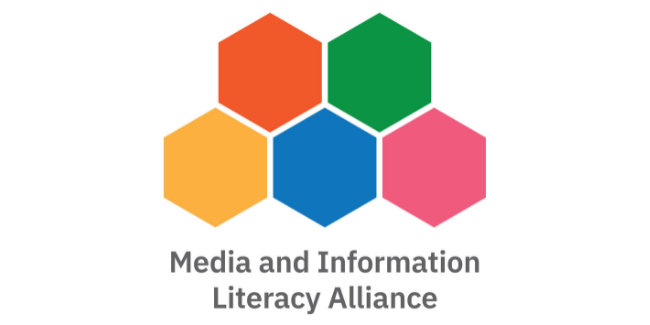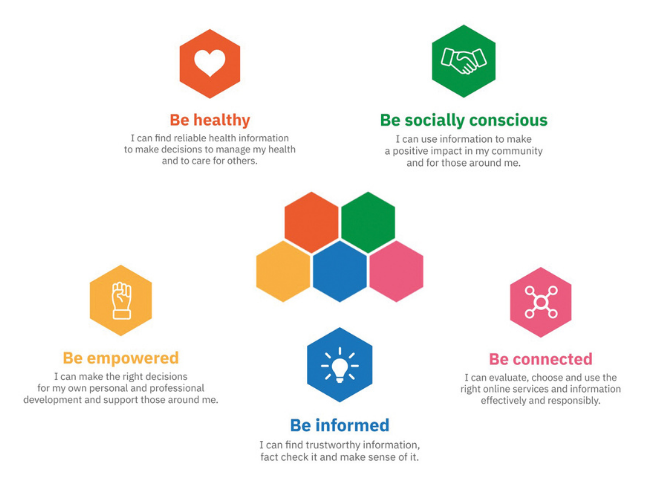
The Media and Information Literacy Alliance (MILA) is a new initiative, co-sponsored by CILIP and the CILIP Information Literacy Group, aimed at securing greater recognition for information and media literacy (MIL) in society at large.
Stéphane Goldstein discusses MILA’s aims and how it will achieve them.
MILA was successfully launched during UNESCO’s Global MIL Week at the end of October, with two online webinars run on consecutive days in England and Scotland. Having laid some foundations over the summer, the Alliance is now ready for
lift-off.
The case for MILA
Why MILA, and why now? Information literacy (IL) has long been promoted by academic librarians and has a substantial body of peer review research at its foundation. But in the UK, IL has mostly been poorly understood and has not
featured in the worldview of policymakers and practitioners beyond the information professions. For many years, CILIP’s Information Literacy Group (ILG) has sought to engage with a variety of players, including civil servants,
third sector bodies and educational organisations, but with limited success. While such organisations have often understood the arguments in favour of IL, for the most part, they’ve not really been able or willing to integrate
them in their strategies, policies and practices. Advocating for IL, and even just raising awareness of it, has therefore often been challenging, in part because many players have not understood how IL differs from digital
skills and digital literacy.
Attitudes may now be starting to shift, albeit slowly. Arguably the most notable factor influencing this shift was the publication, in July, of the Government’s
Online Media Literacy Strategy,
driven by the Department of Digital, Culture, Media and Sport (DCMS), alongside the
Draft Online Safety Bill currently making its way through Parliament. The Strategy’s focus is on media literacy – but the lengthy definition of media literacy set out in both the Strategy and the Bill, with its emphasis on critical approaches to online
information, suggests a significant degree of overlap between media literacy and IL. Moreover, the Strategy makes extensive references to IL, particularly in the context of addressing disinformation. Indeed, it is the first time
that IL features so prominently in a national, UK policy document.
The Strategy is far from perfect (CILIP and ILG produced a joint statement in reaction to it, including setting out concerns about its shortcomings),
but it has the virtue of providing a strategic framework for fostering a culture where, as set out in the ministerial foreword, users “are able to critically evaluate the content they consume, understand that online actions can
have offline consequences, and be able to contribute to a respectful and kind online environment”. And crucially, the Strategy, as well as recognising the role of libraries, calls for increased collaboration and coordination between
stakeholders with an interest in media literacy and IL, to help overcome a sometimes disparate and duplicative approach to joint working.
Championing and collaborating
This is where the opportunity for MILA arises, and the rationale for the Alliance is very much about bringing together individuals and organisations to champion MIL and to provide an open platform for collaboration and knowledge exchange.
Importantly, CILIP and ILG decided from the outset that MILA’s scope should cover both IL and media literacy. They recognised that although historically the two concepts stem from different professional and cultural perspectives
– librarianship and information science in the case of IL, and media studies for media literacy – as we have noted, in practice, there is much crossover between the two.
It is clear that, in the UK, media literacy is driving the public policy agenda in this area, and it therefore makes sense for the Alliance’s remit to capitalise on this by tying in IL with media literacy. MILA’s reach and potential
influence should benefit correspondingly. Moreover, the idea of associating IL and media literacy is not new: UNESCO brought together the two concepts under
the umbrella of MIL several years ago, and its own world-wide MIL Alliance – formerly known as GAPMIL, Global Alliance for Partnerships on Media and Information Literacy – goes back to 2013. MILA therefore mirrors what has been
going on internationally.
MILA is in its early days and there remains much to be defined about its organisation, membership and programme of activities, but it has already succeeded in attracting interest from a variety of organisations. In the first instance,
it has got into a valuable dialogue with DCMS and with the UK media regulator, Ofcom, whose statutory responsibilities include researching and promoting media literacy through its Making Sense of Media programme.
Other bodies with which the Alliance has started engaging include, among others, the Centre for Excellence in Media Practice at Bournemouth University, JCS Online Resources, the National Literacy Trust, Newsguard UK, the NHS Library
and Knowledge Services, the Patient Information Forum, the Guardian Foundation, WEA and Wikimedia UK.
That list is growing by the week and MILA is now looking at ways of formally associating organisations and individuals within the structure of the Alliance. And though CILIP and ILG are the founders and initial co-sponsors of MILA,
it is clear that, to be successful, it will need be ‘owned’ by a wide and diverse collection of players, with an organisational set-up that enables it to work effectively on a collegiate basis. Since October, the Alliance has its
own website, which although still in a basic form, is helping with outreach and promotion.
In addition to starting a dialogue with multiple stakeholders, MILA has now initiated its first two projects: the production of its Media and Information Literacy Framework; and the scoping of a systematic review of IL research.
Media and Information Literacy Framework
The purpose of the MIL Framework is to demonstrate what media and information literacy means for people in everyday life and in various recognisable settings. It reflects
MILA’s aspiration to promote MIL by making it understandable across situations with which everyone can readily identify. To do this, the Framework identifies five lifelong aspirations:
- be informed
- be empowered
- be healthy
- be socially conscious
- be connected
The Framework provides examples in the form of questions to illustrate how information and media related issues are experienced in day-to-day life. The Framework is thus anchored in real situations and problems. It then sets out,
in plain terms, the understanding and the capabilities that people need to answer such questions. For instance, under the ‘be empowered’ aspiration, one of the example questions is ‘I am having some problems with a work colleague
and I have shared those on a public Facebook group. What would happen if my employer found those?’ To answer this, the Framework stresses the importance of recognising that information shared and created by individuals is as
important as information they create; and of checking how one’s information and data is being used. It goes on to list some key abilities and skills, including being able to change privacy settings on social media and tailoring
audiences to decide what is shared and with whom.

This practical approach is repeated throughout the Framework, with an emphasis on helping people reflect on how to get the most out of information that they encounter, use and create; and on how to reach decisions about the nature,
relevance, usefulness and quality of such information. The Framework is also designed to be adapted to suit individual and organisations’ needs and strategies. At present, it is still in draft form, and there will be an active
phase of consultation and testing in 2022. MILA welcomes views about how it might be refined, presented and disseminated.
Systematic review
One of MILA’s natural areas of involvement is to help develop the evidence base. With this in mind, it is currently scoping a systematic review on the outputs of IL research, with a view to demonstrating the value and impact of
IL. In this instance, the focus would be on IL rather than more broadly on MIL, because a robust review of IL research to determine its canon of key foundational research is long overdue.
Moreover, Ofcom is developing its own programme of research into media literacy, so MILA will avoid the risk of duplicating that by concentrating more specifically on IL. A preliminary search on the Web of Science citation database
suggests that, since 1983, 5,550 peer-reviewed articles have been published that are relevant to IL – and that is almost certainly a conservative estimate. There is therefore no shortage of material to categorise and analyse.
Systematic reviews are studies of studies, attempts to collect all existing empirical evidence on a specific topic in order to answer a research question. Their rigorous nature and capacity to reduce bias makes them well-suited
to address fields such as IL where there is a large body of qualitative data and they are well-established in health, social policy and education research. But they can also include meta-analysis in order to address qualitative
as well as quantitative evidence.
A working group has been set up to help scope the review. At time of writing, this has met three times and has made progress in setting some broad parameters for the study. More work is required to define research questions, agree
inclusion and exclusion criteria and put together a specification so as to issue a call for proposals, ideally during the first quarter of 2022. If all goes well, and if sources of funding are identified to undertake the work,
the review should be completed well before the end of the year.
What next?
MILA has been in existence for barely four months and it can already point to early achievements. But much more remains to be done, and one of the immediate priorities is to define how the Alliance will function: its membership
structure, its governance, the way it will engage with its stakeholders as well as its management and operation. Steps are currently being taken to address these points. A key imperative is to identify a core group of players,
other than CILIP and ILG, willing to play an active role in helping to set up appropriate structures and systems. To this effect, MILA recently set up its Board, representing a wide range of professional perspectives; this
held its inaugural meeting on 17 January. Other priorities over the coming months include formulating a programme of activities, building on what is described above; securing additional funding to complement the small grant
provided by CILIP as seed funding; funding of research to demonstrate the value of MIL for the five lifelong aspirations set out in the Framework; and developing a communications strategy, with appropriate tools, including
expanding the website so that it can eventually become a genuine community resource.
MILA will necessarily be a collective endeavour and therefore welcomes ideas and suggestions. If any readers of this article are interested in joining the Alliance’s mailing list or becoming involved in the initiative, there is
a short form on the MILA website. And even better, MILA would be grateful if information about it were circulated among your contacts and networks, including outside
the library world. You can contact the Alliance by writing to Stéphane Goldstein. Look out too for regular updates in future issues of Information Professional.





